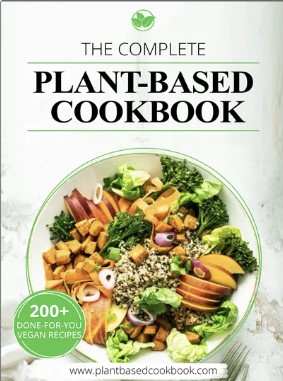Pasta e Ceci, which means “pasta and chickpeas” in Italian, is an ancient Roman recipe that was popular among peasants. They appreciated this strikingly simple recipe for its low cost and high nutritional value. This southern Italian dish is also a vegetarian dish, unlike Pasta Fagioli, which includes pancetta or guanciale. This cousin of Pasta e Fagioli combines broth, hearty chickpeas, herbs, and vegetables to create a comforting and classic Italian recipe.
Chickpeas have a history that dates back to around 7500 BC during the Neolithic period, specifically in what is now known as Turkey. This long history allowed them to gain popularity and spread to neighboring regions such as Syria, Lebanon, and Israel. They were also incorporated into various dishes in Egypt and Greece. In Northern Africa, chickpeas became a key ingredient in making hummus and other spreads.

As their popularity continued to grow, chickpeas eventually made their way to ancient Rome, where they were used in porridge, soups like (Pasta e Ceci or pasta fagioli), and salads. These soups were often mixed with different broths, vegetables, and pasta. The Romans loved this recipe due to its “Cucina Povera” factor. This means the kitchen of the poor in Italian, This cooking style used low-cost and plentiful ingredients. These dishes included inexpensive carbs, seasonal fruit, vegetables, and sometimes inexpensive cuts of meat.

Ingredients for this easy Pasta e Ceci:
- 48 ounces of Vegetable broth. I like low-sodium vegetable broth so I can adjust the salt levels while cooking. If you prefer Chicken or Tomato broth go for it.
- 1 medium-sized diced white or yellow Onion
- 4 Minced fresh cloves of garlic
- 1 Cup chopped celery or fennel
- 3 Chopped carrots
- 30 ounces canned chickpeas, Dried Chickpeas can be used, but it really lengthens prep time.
- 1/2 half a box of dry pasta, or in this recipe I used my homemade Ricotta Cavatelli
- Grated Pecorino cheese or parmesan cheese to add as a topping while serving
- 1 Tbsp Chopped fresh Rosemary
- (optional) Fresh Italian Parsley or fresh cilantro if you prefer
- 3 tbsp Extra virgin Olive oil
- salt and black pepper to taste



Directions for this simple dish:
- Heat 4 Tbsp olive oil on the bottom of the pot. Any large pot or large Dutch oven can be used. The Le Creuset pot is a great investment. Its porcelain-coated cast iron offers excellent heat transfer, distributing heat not only from the bottom but also from the sides. I received one as a gift over 30 years ago, and I still use it today.
- Next let’s add 1 chopped onion, 1 cup chopped celery, 3 chopped carrots, and 4 minced Garlic gloves. Saute the vegetables until they are soft. Be careful not to burn the garlic. Don’t be concerned about undercooking the vegetables, they will continue cooking in the soup.
- Next, add the Vegetable broth and heat until the mixture begins to boil. Lower it to a simmer and cover.
- Rinse the Chicpeas thoroughly in a large colander. Rinsing any canned beans can help reduce sodium levels. Add 20 oz (about 2/3) of the chickpeas to the broth. Place the remaining chickpeas in a food processor with a splash of broth, and grind the chickpeas to a paste. Next, add the desired amount of the chickpea cooking liquid to adjust the thickness of the soup. Keep in mind the soup will reduce while simmering.
- Add 1 tbsp of fresh chopped rosemary, and whatever herbs you prefer.
- Let simmer for 45 minutes
- In a separate large pot cook the pasta. Usually in soups small pasta like ditalini pasta works best. This classic short pasta is small, and bite-sized to fill your spoon with pasta beans, and vegetables. Alternatively, any type of Italian pasta can be used. The type of pasta you choose will determine how easy the soup will be to enjoy. Types of pasta like long pasta can make the soup difficult to eat.
- Heat the potful of salted water to a boil and add the uncooked pasta. Cook to your desired level, and don’t mix the pasta with the soup until ready to serve. Nothing is worse than overcooked pasta.
- Top with grated Parmesan or Pecorino cheese. Also, some fresh Ciabatta bread pairs well with your newfound Italian cuisine.
Variations:
The pan is your palette and you are the artist. Cooking is an art!
Let’s begin with the broth for this delicious pasta e ceci recipe. I prefer using low-sodium vegetable broth so that I can adjust the briny flavor by adding kosher salt. However, you can also use chicken broth or even tomato broth in a pinch. We also need to adjust the viscosity of the broth by pureeing a portion of the chickpeas, or they can be mashed by hand. Some chefs add a small can of tomato paste to the recipe. This will add a tomato flavor to your pasta dish, and also thicken the broth. If you prefer a pasta stew simply mash or puree more whole chickpeas in your recipe. An immersion blender is perfect for adjusting your desired thickness.
Vegetable Variations:
Next, let’s discuss vegetables for this great Pasta e Ceci recipe. We will start with the “Holy Trinity,” which consists of diced onions, carrots, and Green bell peppers. I love to use fennel instead of celery. In addition, it has a similar texture and adds a hint of licorice or anise flavor to the soup. In addition, the more it cooks, the sweeter it becomes.
Now it’s time to hit the spice rack for some fresh herbs. A sprig of Rosemary adds a pine or woodsy flavor to your dish. Thyme can also add a lemon minty flavor. Italian Parsley adds a little tanginess to your southern Italian dish. How about a little heat? Add some red chili flakes
Some chefs add parmesan cheese rind while simmering. So, you have used all your cheese and you have the rind left. Add it to your soup to provide a nutty flavor.

Helpful Hints for making Pasta e Ceci:
- If you prefer the carrots and celery to be more crunchy, you can simply wait to add them to your soup until about 10 minutes before you serve the soup. These vegetables only take that long to cook and still maintain a crunchy texture.
- I know the “chickpeas” are in the name of this recipe, but White beans like cannelloni beans pair well with this soup.
- Remember this classic soup recipe should have a thicker viscosity. Take advantage of the several methods mentioned to thicken your soup
- To make sure the flavor is evenly disbursed you will need to chop the rosemary very fine.
Storage:
Since you have not added the pasta to the soup yet, only freeze the soup. Cooked pasta changes its texture significantly when frozen. Freeze your soup in an airtight container or Ziplock bag. The soup will stay fresh for up to six months. You can also refrigerate the soup in an airtight container and will stay fresh for up to a week. This recipe yields about 3 quarts of soup, and you won’t want to waste a drop.

As you may notice from the context of this Pasta e ceci recipe, there are endless combinations and variations to explore. Feel free to experiment with different ingredients to find the perfect combination for your guests or family. When we cook together as a family, I often ask for their input, such as “Do you want thyme or rosemary in the soup today?” My daughters always prefer fennel over celery because they enjoy the licorice flavor of that vegetable. My wife consistently prefers ditalini pasta
, and sometimes she requests the addition of shredded chicken breast to the soup. Please experiment with the homemade pasta recipe posts in my blog. These are recipes I made with my Nonna as a child, and I have been making them with my kids, and some day I will make them with my grand kids. That means over four generations of pasta makers in the family.


Thank you for taking the time to explore my Pasta e Ceci recipe! I genuinely hope you find joy in preparing this delicious dish, just as I found pleasure in sharing it with you. If you choose to give this recipe a try, I would love to hear your thoughts, so please leave a comment sharing your experience. If you’ve experimented with the recipe and discovered any delightful variations that enhance its flavor, I would be thrilled to learn about them. Your feedback means a lot to me, and I can’t wait to connect with you!







